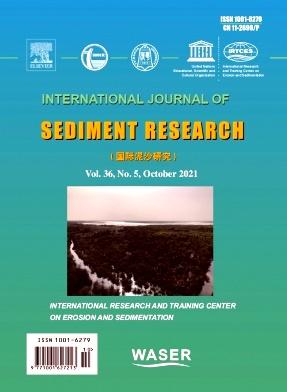利用遥感和机器学习模拟河流沉积物脉冲:开发一种适用于数据丰富和稀缺地区的建模框架
IF 3.5
2区 环境科学与生态学
Q2 ENVIRONMENTAL SCIENCES
引用次数: 0
摘要
河流沉积物脉动对河流水系的整体生态健康构成重大威胁。尽管如此,监测和公布的数据的缺乏强调了设计创新方法的重要性,以了解和测量河流系统对河流区域引入沉积物的反应。本研究的目的是创建一个基于反射率-浊度的建模框架,该框架可以应用于数据有限和丰富的地区。研究了预测变量、训练算法(包括线性回归和额外的机器学习方法)以及输入数据可用性场景的各种组合,以了解影响区域范围内浊度预测的因素。结果表明,对于华盛顿州,随机森林算法使用基于反射率的预测因子和沉积物输送指数(SDI)作为预测因子的组合产生了最准确的结果(数据丰富:NSE = 0.54, RSR = 0.68,数据稀缺:NSE = 0.47, RSR = 0.73)。然而,当在华盛顿经历沉积物脉冲的三个地点进行测试时,基于反射率的浊度预测模型始终低估了Elwha河的最高和最低浊度水平。该模型在预测Oso滑坡后沉积物脉冲初始阶段时也表现出一贯的不准确性。尽管如此,在St. Mt. Helens火山喷发点下游的图尔特河(Toutle River)观测到了令人鼓舞的结果。总体而言,将SDI纳入模型提高了其效率和可转移性。通过在大坝拆除后数据稀缺的地区重建河流沉积物脉冲,这种综合方法有助于提高我们对河流如何定量和预测地响应这些沉积物供应干扰的理解。本文章由计算机程序翻译,如有差异,请以英文原文为准。
Simulating fluvial sediment pulses using remote sensing and machine learning: Development of a modeling framework applicable to data rich and scarce regions
Fluvial sediment pulses pose a significant threat to the overall ecological health of river systems. Nonetheless, the scarcity of monitored and published data underscores the importance of devising innovative methods for understanding and measuring how river systems react to the introduction of sediments across the fluvial domain. The objective of this study was to create a modeling framework based on reflectance–turbidity that can be applied in regions with both limited and abundant data. Various combinations of predictor variables, training algorithms including linear regression and additional machine learning methods, and input data availability scenarios were examined to comprehend the factors influencing turbidity prediction on a regional scale. The results indicated that, for Washington state, the random forest algorithm, utilizing a combination of reflectance-based predictors and sediment delivery index (SDI) as predictors, produced the most accurate outcomes (data rich: NSE = 0.54, RSR = 0.68, data scarce: NSE = 0.47, RSR = 0.73). However, when tested on three locations in Washington experiencing sediment pulses, the reflectance–based turbidity prediction model consistently underestimated the peak high and peak low turbidity levels for the Elwha River. The model also exhibited consistent inaccuracies in predicting the initial phase of sediment pulses following the Oso Landslide. Nevertheless, promising results were observed for the Toutle River, downstream to the St. Mt. Helens Volcanic eruption site. Overall, the inclusion of SDI in the model enhanced its efficiency and transferability. By enabling the reconstruction of fluvial sediment pulses in data-scarce regions following dam removals, this integrated approach contributes to advancing our understanding of how rivers respond quantitatively and predictively to these disturbances in sediment supply.
求助全文
通过发布文献求助,成功后即可免费获取论文全文。
去求助
来源期刊
CiteScore
6.90
自引率
5.60%
发文量
88
审稿时长
74 days
期刊介绍:
International Journal of Sediment Research, the Official Journal of The International Research and Training Center on Erosion and Sedimentation and The World Association for Sedimentation and Erosion Research, publishes scientific and technical papers on all aspects of erosion and sedimentation interpreted in its widest sense.
The subject matter is to include not only the mechanics of sediment transport and fluvial processes, but also what is related to geography, geomorphology, soil erosion, watershed management, sedimentology, environmental and ecological impacts of sedimentation, social and economical effects of sedimentation and its assessment, etc. Special attention is paid to engineering problems related to sedimentation and erosion.

 求助内容:
求助内容: 应助结果提醒方式:
应助结果提醒方式:


